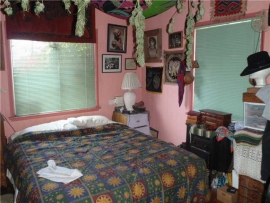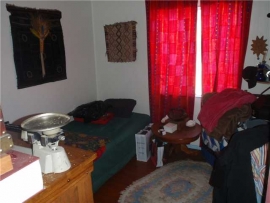A recent commentary in Housing Wire lays out the case against strategic default. It expresses a point of view worth examining.
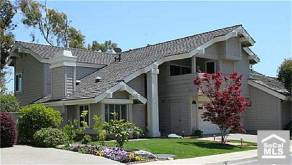
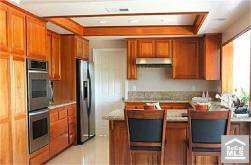
Irvine Home Address … 24 SOUTHERN WOOD Irvine, CA 92603
Resale Home Price …… $1,250,000

Ya just got slapped
Across the face my friend.
Ya just got slapped
Yes that really just happened.
Well, everybody saw it, hah
Everybody laughed and clapped.
‘Cause it was awesome.
The way that you just got slapped.
Marshall Erikson Himyn — You Just Got Slapped
Today's featured article is a commentary from Housing Wire's Kerri Panchuk. Apparently, she does not accept the arguments I made in the following posts:
Strategic mortgage default has become common and accepted in 2011
Strategic default consequences minor and likely to decrease
Strategic default is moral imperative to prevent future housing bubbles
Widespread strategic default is essential to economic recovery
For a variety of reasons, I believe strategic default is a wise course of action for underwater loan owners who are paying more to own than the cost of rental. Let's read the counter-arguments to check their validity.
The new slap in the face of foreclosure
by KERRI PANCHUK — Tuesday, September 20th, 2011, 2:33 pm
Every American upset with the state of mortgage lending should read the Fox Business News article on strategic default in order to meet the “New Face of Foreclosure.”
Strategic defaulters are underwater borrowers who intend to remedy their “upside-down situation” by simply walking away from their mortgages.
The Fox Business article paints a clear picture of a 67-year-old strategic defaulter who is walking away from a $166,000 loan.
So is this man a distressed borrower who lost his job, fell ill or landed on unexpected hard times? No, not really. Those situations tend to garner sympathy, and rightfully so.
Instead, this man admits he collects two pensions, Social Security and generates additional income through a small business.
The defaulter also has the ability to make his payments, but lost his drive to do so when home values dropped, leaving him $45,000 underwater.
Isn't it also sad that he is $45,000 underwater? The unemployed didn't want to lose their jobs, which is sad, but the loan owner didn't want to see his house drop in value. Shouldn't that event also be a sad story deserving of sympathy?
The only difference between the two is the capacity to repay a lender — a lender who was part of a collective insanity in lending which created the valuation problem we are now correcting. The house this man bought at an inflated price would not have been so expensive if not for the behavior of lenders. Prices didn't fall because of the recession. Prices fell because they were too high, and the result was a recession.
The borrower's attitude recently changed in other ways. He now wants to live in the city, but he can't sell his home in this economy. Even if he could, it's impossible to get back what he paid.
The economy had nothing to do with his inability to sell the home. As I stated above, the lender-induced price inflation was the problem. The fact he can't get back what he paid is sad.
It's a type of new-car syndrome, but on a large scale.
Yet rather than sticking it out, the homeowner called a firm that readily advises homeowners on how to strategically default on their mortgages.
Why should he stick it out? Because some lender wanted to profit from his loan? Because of a moral obligation? LOL!
If the borrower gets his heart's desire, he will simply walk away from the mortgage, sending the home into foreclosure while remaining cash-rich and free to move on.
Good move, right?
Absolutely. It's the wisest course of action given his circumstances.
Of course, his neighbors won't be so lucky. They will now be living next to an REO.
So what? This guy is supposed to suffer so his neighbors can continue to sustain the illusion of home equity? The REO will sell at market value, and if that is lower than what the neighbors believe their house to be worth, the neighbors need to re-adjust their perception of value.
Call it the strategic default phenomenon, if you will, but it's more than a trend. It's a threat to the power of contracts
I don't think so… Strategic Default Is Merely Collecting On Home Price Protection Insurance Sold By Lenders.
People fail to keep the promises in contracts all the time. Good contracts spell out the consequences of failure to perform. Rather than forcing lenders to sue borrowers on a Promissory Note and wait for recovery, lenders compel borrowers to sign a mortgage agreement which allows the lender to call a public auction for the sale of the property. Mortgages exist because lenders needed to spell out the contractual consequences of non-performance by borrowers.
Failing to pay a mortgage note is not a threat to contracts. On the contrary, foreclosures are the enforcement of contracts. If you want to see what is a threat to contracts, look at new regulations concerning loan modifications and restrictions on foreclosures, those are threats to the power of contracts.
and an attack against all Americans who are paying for the mortgage crisis in the form of tax dollars that supplement housing initiatives and maintenance on foreclosures.
Strategic default is not an attack against all Americans by usurping their tax dollars; bank bailouts are.

Not to mention that declining home values and tighter lending standards that are keeping new homeowners on the sidelines.
Declining home values and tighter lending standards are wonderful for those sitting on the sidelines. It means properties are getting less expensive, and money is only being loaned to people who will pay it back. 
Mind you, we are not talking about those who are truly in distress. Foreclosures from unexpected life changes are a different beast altogether.
Why? I don't believe capacity to pay makes any difference at all. Both parties should be foreclosed on immediately and their properties recycled into the market. The notion that the two groups are separable gives rise to the idea that squatting is okay as long as the squatter is unemployed. Do you believe that?
While businesses should not be excused for unethical practices, the idea that homeowners are committing a permissible sin by not paying affordable debt is not admirable.
No, a loanowner who is sacrificing their family's future in order to pay off a loan they should never have been given is not admirable. The needs of the family outweigh the needs of a bank to make profits.
In fact, it's an insult to borrowers who never bought in the bubble and to other homeowners who keep paying on underwater mortgages despite their frustrations.
No, it should be a wakeup call to loanowners who are underwater on their mortgage. The slap in the face should be a sobering realization that they are being chumps for continuing to pay.
The fact that lenders inflated a housing bubble and taxpayers have to cover the losses is a slap in the face to everyone who didn't buy in the bubble, both homeowners and renters.
A few months ago, an attorney working in default raised the following question: What if the strategic defaulter had made money on the same house? If he bought the home for $144,000 and gained a $20,000 profit, could the originator then call the borrower and ask him to split the earnings?
No. That's exactly why lenders should be careful not to inflate housing bubbles by using 100% financing. Lenders all know now that borrowers will default and leave them holding the bag. If lenders did not fear this, they would repeat the mistakes of the housing bubble. The call option has always been embedded in a loan contract. It's only when down payments are eliminated that the cost of this option becomes so low that borrowers are foolish not to gamble with the banks money.
F. Scott Fitzgerald's famous American novel, “The Great Gatsby,” dealt with a similar phenomenon in his time. While Fitzgerald's rant against the “careless people” of society in Gatsby was interpreted as an assault against rich aristocrats. Fitzgerald's rant was more about carelessness in general. And the principal goes across class boundaries. In his worldview, those who are careless make decisions without consequences. They enjoy the fruits of the high-rolling times and let others pick up the tab when things go bad.
So who is she criticizing here, banks or borrowers? It is the lenders who were careless and abdicated their responsibility to loan to only borrowers who could repay their loans in amounts they could afford to repay. This abdication of responsibility is what inflated house prices and created the incentive for strategic default. Lenders are more culpable than borrowers.
Certainly in the mortgage crisis there were many people and companies who were careless. But the idea that strategic defaulters are common heroes pushing back against a rigged system is the biggest slap in the face to all homeowners who bought into the American Dream only to be stung by the mortgage crisis.
Write to Kerri Panchuk.
Strategic defaulters are common heroes pushing back against a corrupt system. This is not a slap in the face to homeowners, it is a slap in the face to foolish lenders. Lenders are the ones who ruined the American Dream.

I get the impression from the emotional tone of the article above that the author is underwater on her mortgage and lashing out at the injustice she sees as strategic defaulters are benefiting from their decision. Perhaps I am wrong, but she doesn't feel the outcomes she is witnessing are just, and if I were a loan owner still paying, I might feel the same.
Strategic default is about resolving conflicting values
The essence of the strategic default debate revolves around two conflicting values. First, there is the value of keeping one's word and following through with the terms of an agreement, and second, there is the value of providing a viable economic future for one's family. For those who are severely underwater and paying more than a comparable rental, they can't have both. They must chose.
There is no right or wrong, black or white, in cases of conflicting values. Each person must weigh what they believe to be more important. Whatever choices each of us might make does not give us the right to judge others by our standards. Personally, I would chose my family. Some would endure the pain to keep their word. Who's to say which is right or wrong?

They believe they got a good deal
The sellers of today's featured property followed a good buying strategy when they purchased. They found a motivated seller who had given up on the sale, and they negotiated a price well below their recent asking price. Based on what they are asking today — after three and one half years of falling prices — they must believe they got a good deal because know they believe they can sell for a profit.
Property History for 24 SOUTHERN WOOD
| Date | Event | Price | Source | ||
|---|---|---|---|---|---|
| Sep 17, 2011 | Listed (Active) | $1,250,000 | SoCalMLS #U11003957 | ||
| Aug 06, 2010 | – Delisted (Withdrawn) | — | Inactive SoCalMLS #2 | ||
| Jul 06, 2010 | – Price Changed | * | Inactive SoCalMLS #2 | ||
| May 05, 2010 | – Price Changed | * | Inactive SoCalMLS #2 | ||
| May 05, 2010 | Delisted | * | Inactive Zillow #1 | ||
| May 05, 2010 | – Listed (Active) | * | Inactive SoCalMLS #2 | ||
| Apr 01, 2010 | Relisted (Active) | * | Inactive Zillow #1 | ||
| Mar 31, 2010 | Delisted | * | Inactive Zillow #1 | ||
| Feb 15, 2010 | Listed (Active) | * | Inactive Zillow #1 | ||
| Jun 02, 2008 | Sold (Public Records) | $1,085,000 | Public Records | ||
| Jun 02, 2008 | Sold (MLS) (Closed) | $1,085,000 | Inactive SoCalMLS #S518133 | ||
| Apr 25, 2008 | Delisted | — | Inactive SoCalMLS #S518133 | ||
| Mar 25, 2008 | Price Changed | $1,198,000 | Inactive SoCalMLS #S518133 | ||
| Feb 19, 2008 | Price Changed | $1,248,000 | Inactive SoCalMLS #S518133 | ||
| Jan 16, 2008 | Listed | $1,298,000 | Inactive SoCalMLS #S518133 | ||
Turtle Rock has done amazingly well at holding its bubble valuations. That being said, I have my doubts about this one making a profit.
What do you think? Is this property fairly priced, and will it sell for near its asking price.
——————————————————————————————————————————————-
This property is available for sale via the MLS.
Please contact Shevy Akason, #01836707
949.769.1599
sales@idealhomebrokers.com


Irvine House Address … 24 SOUTHERN WOOD Irvine, CA 92603
Resale House Price …… $1,250,000
.jpg)
Beds: 4
Baths: 3
Sq. Ft.: 2550
$490/SF
Property Type: Residential, Single Family
Style: Two Level, Contemporary, Traditional
View: Canyon, Fields, Hills, Mountain, Panoramic, Park/Green Belt, Tree Top
Year Built: 1979
Community: Turtle Rock
County: Orange
MLS#: U11003957
Source: SoCalMLS
On Redfin: 1 day
——————————————————————————
HIGHLY CUSTOMIZED VIEW HOME AT A QUIET CUL-DE-DAC IN PUPULAR HIGHLAND GARDENS WITH SWEEPING VIEW OF HILLS, TREES, SHADY CANYON AND TURTLE RIDGE. ELEGANTLY REMODELED WITH CATHERDRAL CEILINGS, TWO FIREPLACES, MARBLE FLOOING; FAMILY ROOM WITH WET BAR AND A TEMPERATURE CONTROLLED WINE STORAGE; GOURMET KITCHEN WITH TOP OF THE LINE APPLIANCES, GRANITE COUNTER AND BREAKFAST BAR, CHERRY WOOD CABINETRY AND GARDEN PICUTURE WINDOW. NEWER DOUBLE PANED WINDOWS AND ROOF. SOLAR TUBES, BUILT-IN MURPHY BED, RECESS LIGHTING. PROFESSIONALLY DECORATED, STAINED GLASS WINDOW, OPEN FLOOR PLAN, LIGHT AND AIRY. EXTRA SPACIOUS MASTER SUITE WITH PRIVATE BALCONEY; DUAL VANITY GRANITE COUNTER, SOAKING TUB. VIEW FROM ALL ROOMS WITH PRIVACY AND INDIVIDUAL D COR. FULLLY FENCED YARD WITH MANY FRUIT TREES. COVERED PATIO FOR INDOOR-OUTDOOR ENTERTAINING AMANITIES INCLUDING ASSOICATION POOL, SPA, PARK, CANYON TRAILS, CHILDREN PLAY GROUNDS AND MUCH MORE NO MELLOW ROOS AND LOW HOA FEES. THIS IS A MUST SEE!
——————————————————————————————————————————————-


Proprietary IHB commentary and analysis ![]()
PUPULAR? CATHERDRAL? FLOOING? PICUTURE? BALCONEY? FULLLY? AMANITIES? ASSOICATION?
Resale Home Price …… $1,250,000
House Purchase Price … $1,085,000
House Purchase Date …. 6/2/2008
Net Gain (Loss) ………. $90,000
Percent Change ………. 8.3%
Annual Appreciation … 4.3%
Cost of Home Ownership
————————————————-
$1,250,000 ………. Asking Price
$250,000 ………. 20% Down Conventional
4.18% …………… Mortgage Interest Rate
$1,000,000 ………. 30-Year Mortgage
$244,694 ………. Income Requirement
$4,879 ………. Monthly Mortgage Payment
$1083 ………. Property Tax (@1.04%)
$0 ………. Special Taxes and Levies (Mello Roos)
$260 ………. Homeowners Insurance (@ 0.25%)
$0 ………. Private Mortgage Insurance
$99 ………. Homeowners Association Fees
============================================
$6,321 ………. Monthly Cash Outlays
-$1279 ………. Tax Savings (% of Interest and Property Tax)
-$1395 ………. Equity Hidden in Payment (Amortization)
$372 ………. Lost Income to Down Payment (net of taxes)
$176 ………. Maintenance and Replacement Reserves
============================================
$4,196 ………. Monthly Cost of Ownership
Cash Acquisition Demands
——————————————————————————
$12,500 ………. Furnishing and Move In @1%
$12,500 ………. Closing Costs @1%
$10,000 ………… Interest Points @1% of Loan
$250,000 ………. Down Payment
============================================
$285,000 ………. Total Cash Costs
$64,300 ………… Emergency Cash Reserves
============================================
$349,300 ………. Total Savings Needed
——————————————————————————————————————————————————-

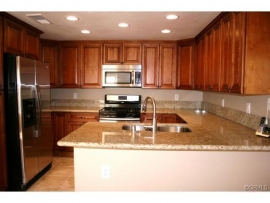









 Three private bedrooms are carpeted in neutral colors. Home includes a fabulous landscaped patio with stamped concrete surrounded by a stunning custom redwood fence and gate. Enjoy the beautiful lush green belt located adjacent to the property for year around serenity. The property is extraordinary well maintained and includes an attached, oversized two car garage for extra storage. This home is located within minutes of Southern California's most desirable destinations and excellent Irvine schools.
Three private bedrooms are carpeted in neutral colors. Home includes a fabulous landscaped patio with stamped concrete surrounded by a stunning custom redwood fence and gate. Enjoy the beautiful lush green belt located adjacent to the property for year around serenity. The property is extraordinary well maintained and includes an attached, oversized two car garage for extra storage. This home is located within minutes of Southern California's most desirable destinations and excellent Irvine schools. 

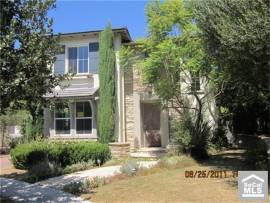










.jpg)

